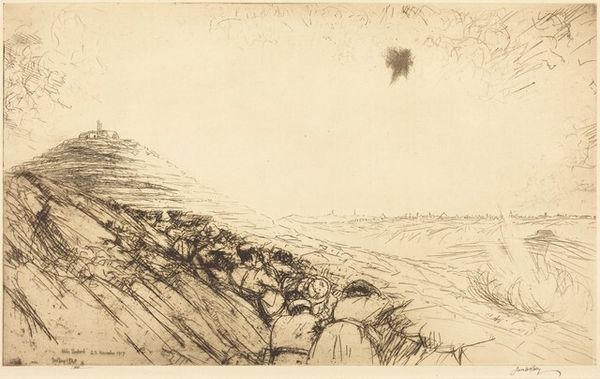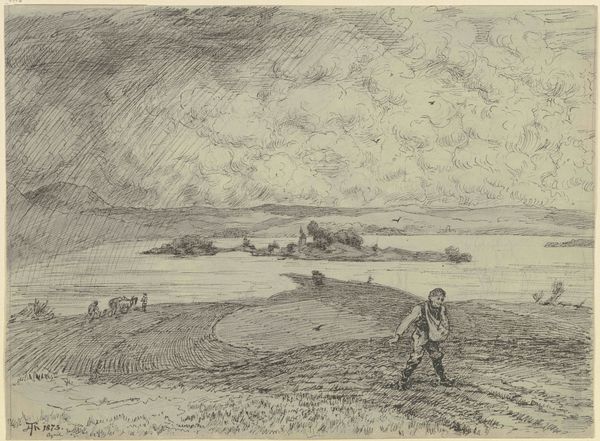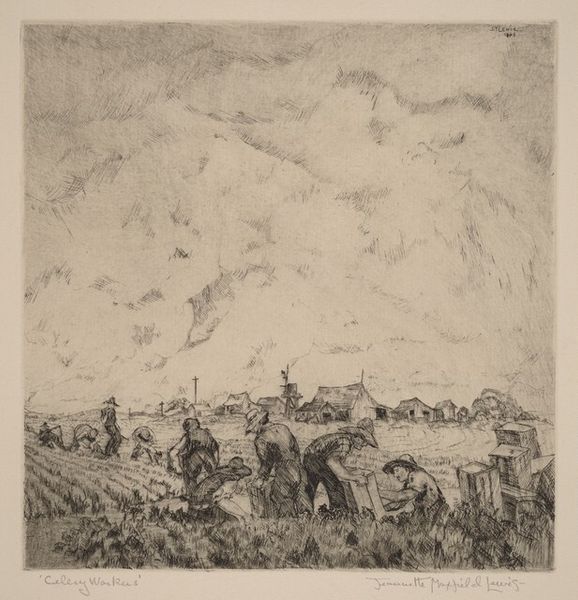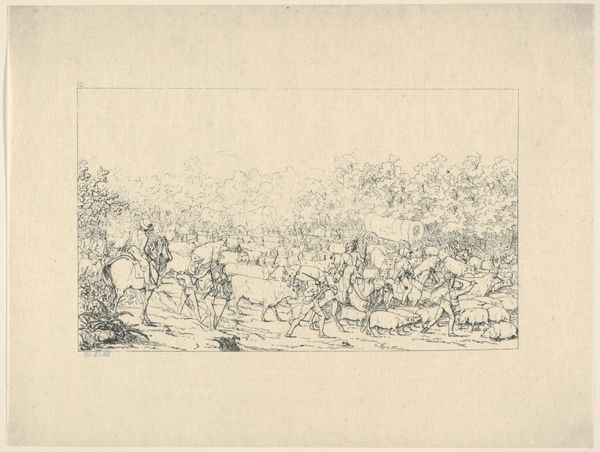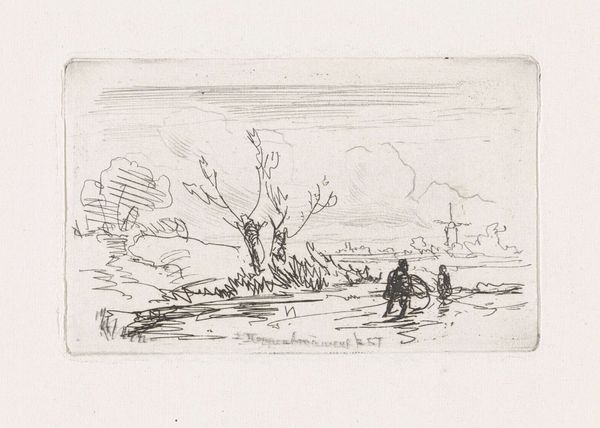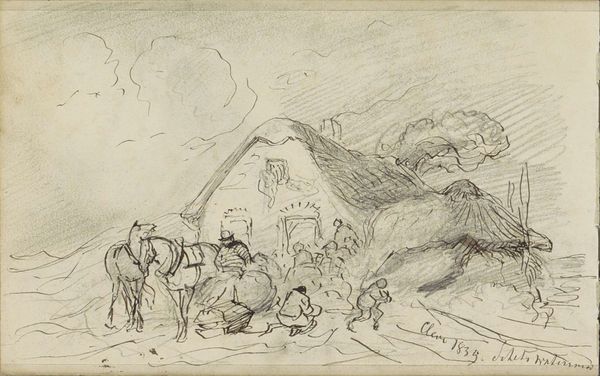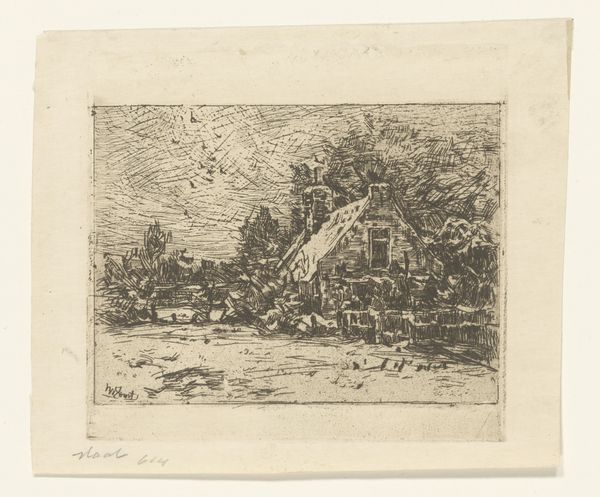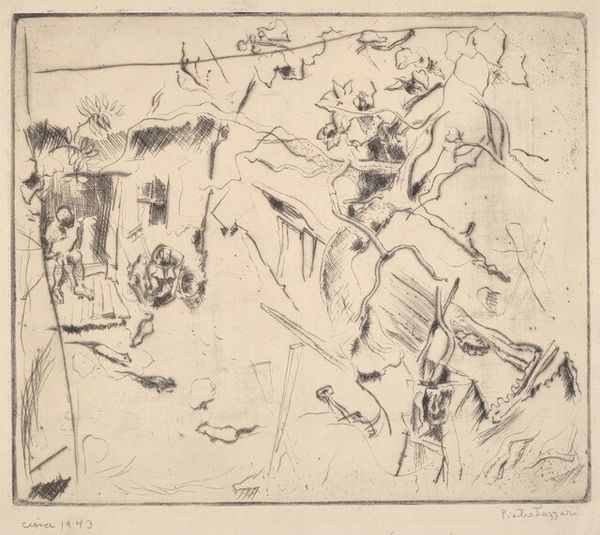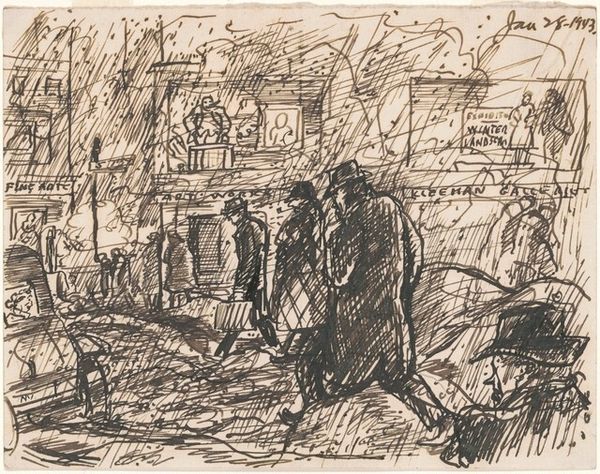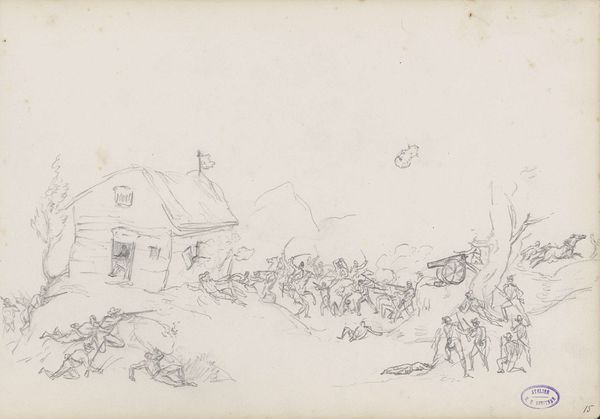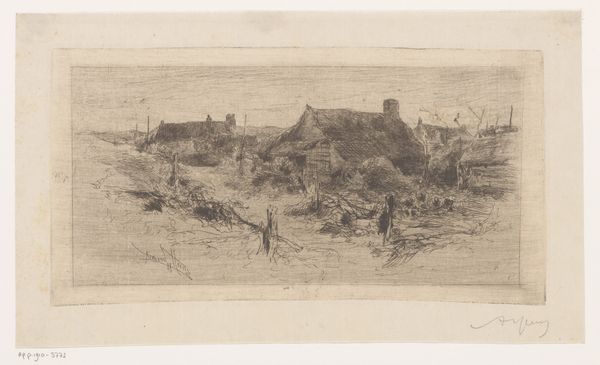
Dimensions: plate: 19.21 × 21.11 cm (7 9/16 × 8 5/16 in.) sheet: 24.45 × 26.99 cm (9 5/8 × 10 5/8 in.)
Copyright: National Gallery of Art: CC0 1.0
Editor: Here we have Lester George Hornby's "The Marne Advance at Vaux" from 1918, rendered in etching. It strikes me as a somber depiction, but also hints at forward movement. The way the village is depicted—what’s left of it anyway— is really compelling. How do you interpret this work? Curator: Well, viewing this piece through a historical lens, I immediately consider its creation amidst the First World War. Notice the visual weight given to the shattered buildings. This reflects not only the physical destruction, but also a societal breakdown. Consider the socio-political environment of 1918, where governments heavily influenced public perception of the war. How do you think Hornby positions the soldiers within that context? Editor: That's interesting. I see them as… almost anonymous figures, part of a larger machine. Their individuality seems diminished by the scene's overwhelming desolation and the scale of conflict. Curator: Exactly. This piece participates in a long history of war imagery. It acknowledges the role of conflict in shaping landscapes and identities. Does this etching challenge or reinforce contemporary perceptions about WWI? Editor: I think it might challenge them, at least a little. While clearly showing the destruction, it avoids glorifying the violence, perhaps suggesting a more critical perspective on the war’s impact. It makes me think about how the piece itself becomes a historical document of the time, shaped both by the artist’s intentions and the institutional forces surrounding its creation and reception. Curator: Precisely! And it highlights how historical context transforms our understanding of seemingly straightforward images. It's in considering those contexts that we uncover how even landscapes can become stages for the complex performance of socio-political forces. Editor: This has certainly changed how I see the print, making me look beyond the literal imagery and towards its deeper historical and social resonance. Thank you!
Comments
No comments
Be the first to comment and join the conversation on the ultimate creative platform.
